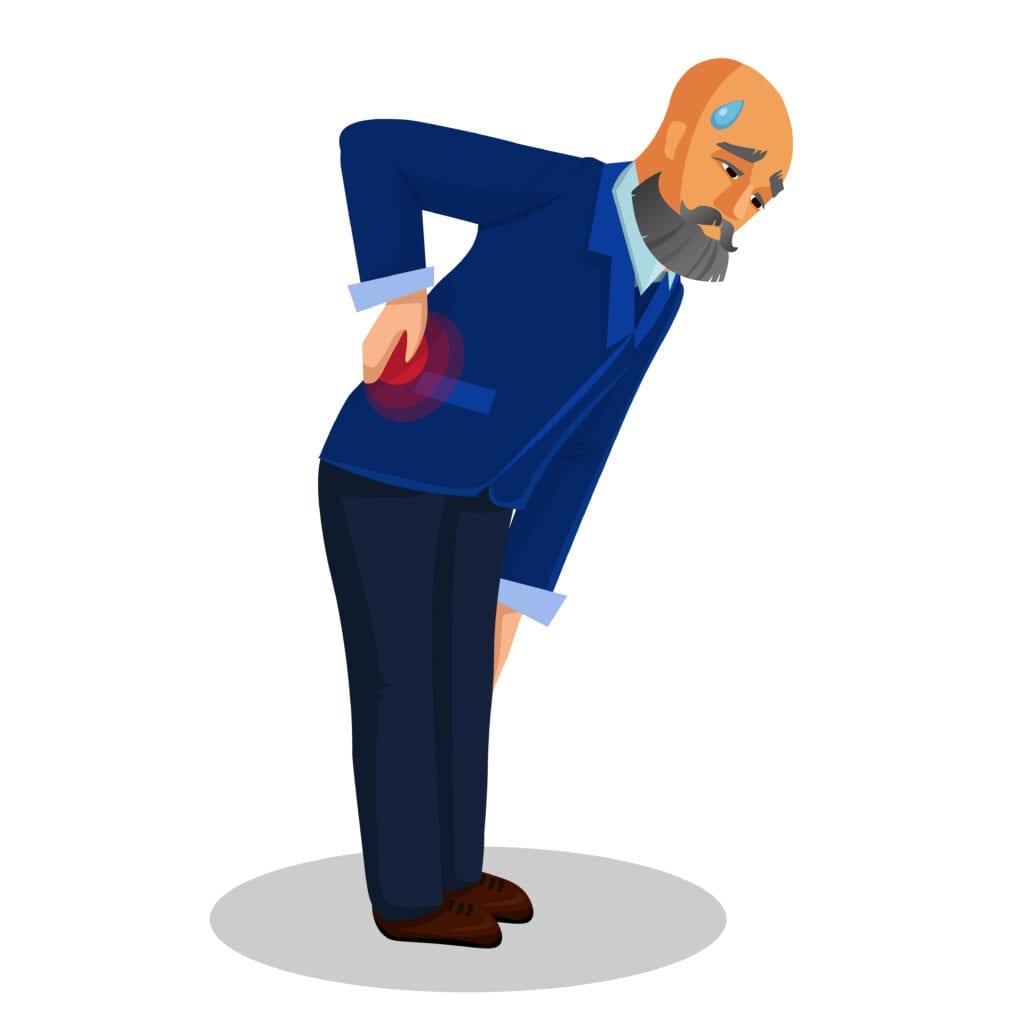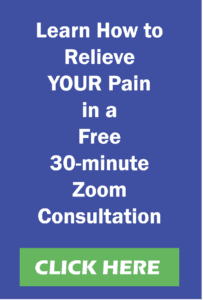Is back pain a part of aging? I get this question all the time. What is interesting is how many doctors and therapists ask me the same question. While it does feel like the older we get, the more back pain we endure. Back pain is the most common ailment I see from my clients over 40. Back pain is not a direct result of aging. It has more to do with their movements or lack thereof.

Causes of Back Pain
Barring a trauma to your back, most back pains do not start as a back problem. Back pain and subsequent disc damage comes from your posture, how you walk, shoes you wear, and inflexibility of the hips and/or neck. Think about this, your back is made up of 26 vertebrae with disc in-between. These bones cannot apply pressure without the use of your muscles. Damage to discs and nerves is the result of muscle pressure, not a bone that moves on its own. Back pain is not a direct result of aging, it has to do with your movement or lack of movement.
Low Back Pain
Morning back stiffness or stiffness when you get up out of a chair is due to sitting too much during the day. People wear elastic back braces to support their backs. This will not help your back, because if you use the brace and lift things properly, back stiffness can still occur because the upper front thigh muscles tighten from the lifting which can pull the pelvis forward causing a kink in your low back. The inner thighs can do the same thing. This is how it started for many older people who walk bent over. Though they have a form of arthritis, it wasn’t always the case. To see my free videos got to https://www.youtube.com/musclerepairshop.
Most practitioners are all taught to focus on the symptoms and not the cause. Most doctors and therapists, dealing with heavy caseloads, simply want to help you stop the pain. therefore, when your back hurts, the practitioners’ focus is on stopping the pain with conventional medicine. These are short-term fixes, not long-term solutions.
Upper Back
The biggest surprise about the upper back and neck is the pain can be caused by the way you walk. If your ankles only bend to 90 degrees, more than likely, you will lead with your head putting a lot of pressure on your mid-back and lower neck. Your feet should feel as soft as your hands and the ankles should bend at least to 110 degrees. This will allow the toes of the back foot to push you forward. This too can prevent head forward posture. To learn more got to https://stretchnrelease.com/2019/03/29/give-me-10-days-to-stop-your-plantar-fasciitis/.
Take This Simple Test
Here is a simple test to try if you are experiencing back pain. If your back hurts more, when standing, walk for a distance, or getting up out of a chair or bed, but it stops hurting when you sit down. More than likely, it is your thighs, front or inner, and not your back. If it is the inner thighs, is more to the center of the back. However,if the pain is towards the outside of your back, it is the front thigh muscles.
If your back hurts when sitting too long and when you stand it stops, then the back of your thighs and calves are too tight. If your neck and mid-back hurt, check your stride. Are your shoulders rounded in, or your head leans forward? Usually, the muscles of your chest and front of the neck are short, or your stride is too short. By taking shorter strides and not bending your feet, it forces you to lead with your nose and that puts a lot of pressure on your neck. When walking, you should always feel yourself pushing off with the toes of the back foot.To learn more about what to do, go to https://musclerepairshop.com.

